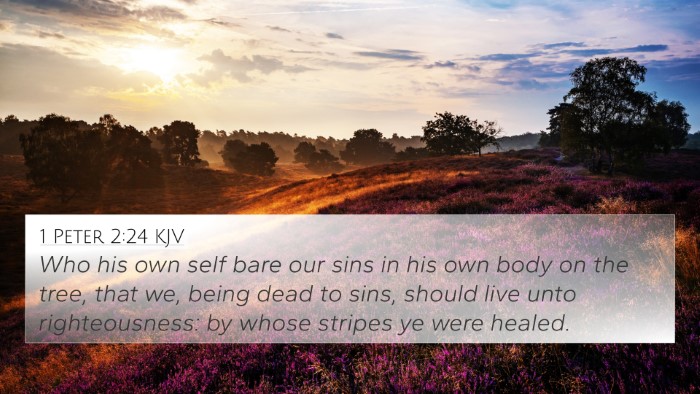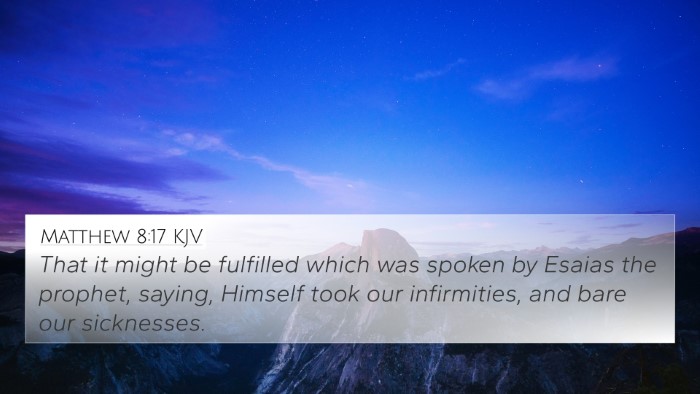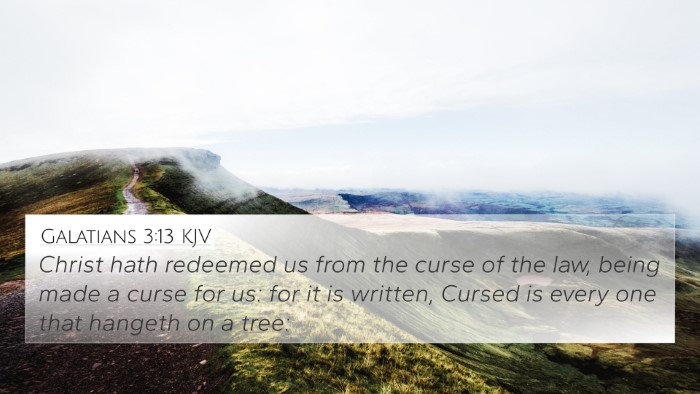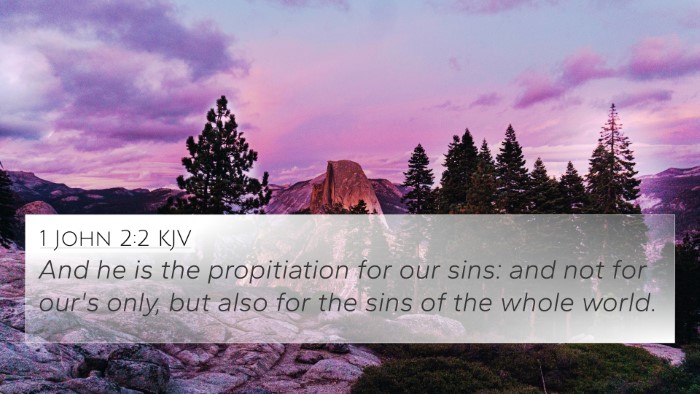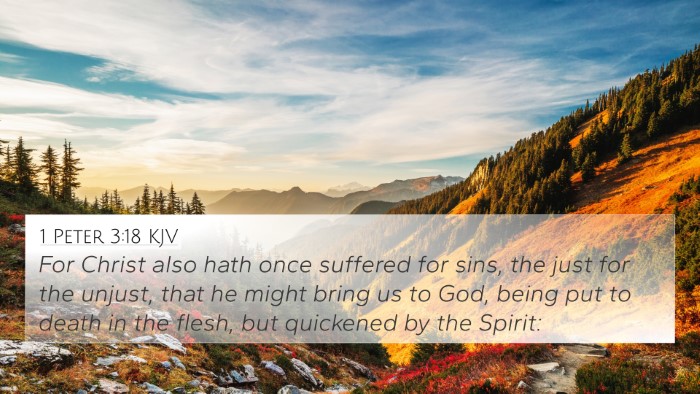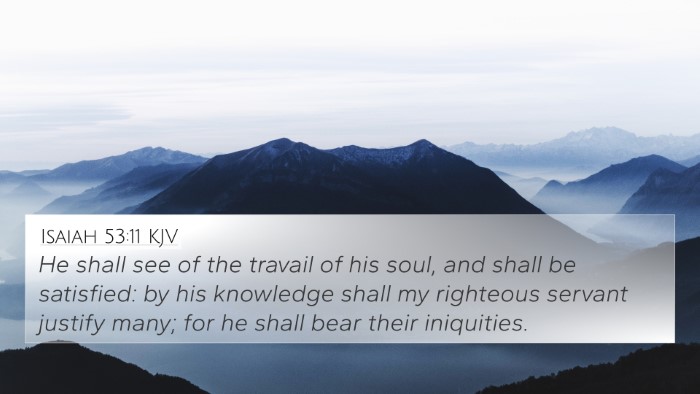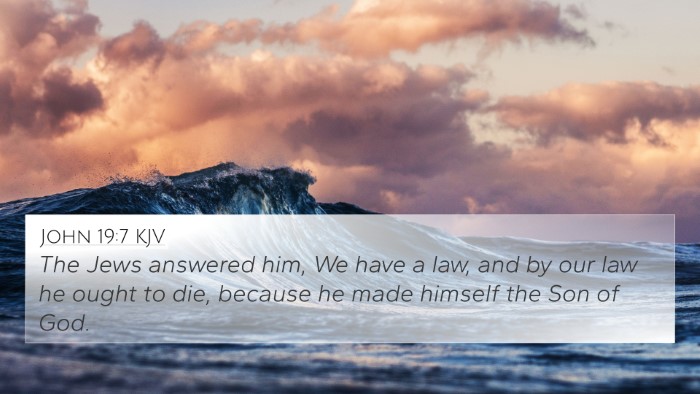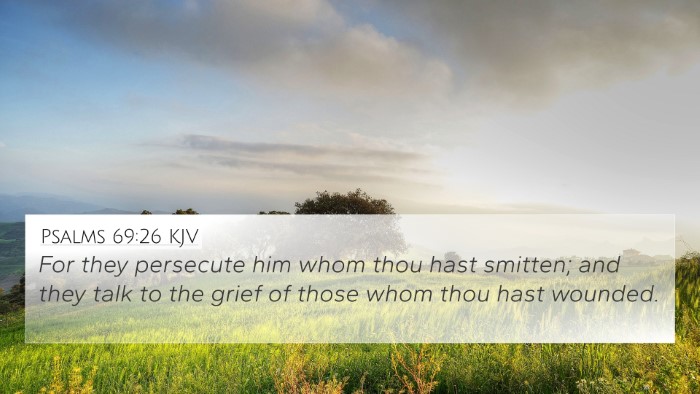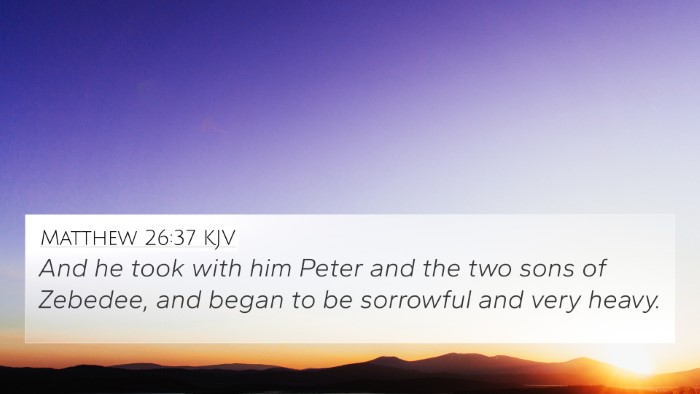Understanding Isaiah 53:4
Isaiah 53:4 states: "Surely he hath borne our griefs, and carried our sorrows: yet we did esteem him stricken, smitten of God, and afflicted."
Summary of Isaiah 53:4
This verse encapsulates the profound suffering that the Messiah would undertake. It reveals both His compassionate role as a bearer of humanity's pain and the mistaken perceptions of His affliction. The emphasis on "griefs" and "sorrows" signifies not only physical ailments but also the emotional and spiritual burdens that humanity carries.
Commentary Insights
From the commentaries of Matthew Henry, Albert Barnes, and Adam Clarke, we gather several layers of meaning:
- Matthew Henry: He notes that this verse speaks of the substitutionary nature of Christ’s suffering. The term "borne" indicates an active, willing taking upon oneself, showcasing the depth of Christ's compassion for humanity. The misunderstanding of His suffering as divine punishment highlights the recurring theme of misjudgment of God's ways.
- Albert Barnes: Barnes emphasizes the prophetic nature of this passage, pointing to the future realization of Christ's role as the Savior. He views "griefs" and "sorrows" as reflective of our sinful state, and how Christ’s afflictions are linked to our transgressions and the need for redemption.
- Adam Clarke: Clarke focuses on the emotional aspects, interpreting "griefs" and "sorrows" to imply both physical and emotional pain. He also underscores the irony that, despite His perfect innocence, He was perceived as forsaken by God, thus illustrating humanity's failure to recognize the true nature of Christ's mission.
Thematic Bible Verse Connections
Isaiah 53:4 has numerous connections across the Bible, enhancing our understanding through inter-Biblical dialogue:
- Matthew 8:17: This verse correlates directly with Isaiah 53:4, stating, “He took our infirmities and bore our diseases,” affirming Jesus’ fulfillment of this prophecy.
- 1 Peter 2:24: “Who his own self bare our sins in his own body on the tree,” parallels the theme of bearing burdens, aligning Old Testament prophecy with New Testament realization.
- Romans 4:25: Reflects on Christ being "delivered for our offenses," linking the nature of His suffering to our justification.
- Galatians 3:13: Speaks of Christ redeeming us from the curse of the law, presenting His suffering as a means of salvation.
- 2 Corinthians 5:21: “For he hath made him to be sin for us,” reinforces the connection that Christ implicated Himself in human suffering as part of the divine plan for redemption.
- Psalm 69:10: Highlights the anguish and sorrow experienced, perhaps with a typological reference to the Messiah’s distress.
- Hebrews 4:15: Emphasizes Christ being touched with the feelings of our infirmities, thus solidifying the empathetic nature of His suffering.
- John 1:29: “Behold the Lamb of God, which taketh away the sin of the world,” which frames the sacrificial aspect of His suffering.
- Isaiah 53:10: Continues the theme of sacrifice, noting, “It pleased the Lord to bruise him,” highlighting the divine purpose behind His suffering.
- Luke 24:26: “Ought not Christ to have suffered these things, and to enter into his glory?” prompts reflection on the necessity of suffering as part of God's redemptive timeline.
Cross-Referencing Biblical Texts
Connecting Isaiah 53:4 with the broader narrative of Scripture provides a more holistic understanding of Christ's mission:
- The connections between Old and New Testament texts highlight a continuous thread of redemption.
- Using a Bible concordance enhances the study experience, allowing for easy navigation of related verses.
- Tools for Bible cross-referencing can reveal deeper insights into thematic connections, facilitating richer study.
- Bible reference resources assist in identifying key verses that enrich sermon preparation and personal study.
- Cross-reference Bible study methods engage with Scripture on a more profound level, ensuring that readers grasp the unity of biblical teaching.
Conclusion
Isaiah 53:4 is a pivotal verse that serves as a foundation for understanding Christ's sacrifices. By examining the verse through various public domain commentaries, along with cross-referencing it with related scriptures, we gain a comprehensive perspective on the significance of His suffering as it relates to our redemption.
For those looking to explore themes and connections further, helpful methods include understanding how to find cross-references in the Bible and utilizing comparative Bible verse analysis as a means to enhance personal study and collective teachings.



